Welcome to the ultimate roadmap to self-expression—our Complete Guide to the Different Types of Body Piercing! Whether you’re a piercing pro or a newbie considering your first stylish addition, this guide is your gateway to exploring the diverse world of body piercing. From classic ear piercings to intricate facial and body adornments, we’re here to unravel the mysteries behind various piercings!
What Are Some Popular Types of Body Piercing
Body piercing, as a form of body modification, involves the insertion of jewelry into specific parts of the body, like ears, nose, or even more unique spots. This practice has endured for an extended period across various cultures. Even today, it is also very popular and many people consider it a cool and trendy way to show their unique style. Each piercing can be a small piece of personal art, a way to communicate your identity visually. Here are some popular types of body piercings that many people often choose to enhance their style and make a personal statement.
1. Ear Piercings
Ear piercing is one of the most classic and common forms of body piercing. It requires creating small openings in the earlobe or cartilage to accommodate jewelry. There are various types of ear piercings:
- Standard Lobe Piercing: Located on the fleshy part of the earlobe, this is the most prevalent and classic form of ear piercing. Thanks to its simplicity and speedy healing process, it’s an excellent choice for those getting pierced for the first time.

- Cartilage Piercings: Cartilage piercings are done on the upper part of the ear, adding an element of uniqueness to your ear jewelry. Consider popular options like helix piercings on the outer rim of the ear and tragus piercings situated on the small cartilage area just in front of the ear canal.
- Industrial Piercing: A bold statement involving two holes connected by a single barbell. Typically traverses the upper ear cartilage.
- Tragus and Anti-Tragus Piercings: Tragus piercings are on the small cartilage in front of the ear canal. Correspondingly, anti-tragus piercings are on the cartilage opposite the tragus.
These piercings allow for a wide range of jewelry choices and styles, making ear piercings one of the most popular and versatile forms of body modification. From simple studs to statement hoop earrings featuring Gothic elements, ear piercings offer a customizable and fashionable way to express personal style.
2. Nose Piercings
Originating in diverse cultures worldwide, nose piercings hold deep cultural significance in various regions, symbolizing rites of passage, spirituality, and social identity. From ancient tribal practices to religious rituals, the piercing of the nose has been a meaningful tradition that carries forward in different forms. Here are some common types of nose piercings:
- Nostril Piercing: The most common type, involves a single piercing on either side of the nostril. Offers versatility with a range of jewelry, including studs, hoops, and rings.
- Septum Piercing: Goes through the thin cartilage between the nostrils. Allows for various jewelry styles such as captive bead rings and circular barbells.

- Bridge Piercing: Crosses the bridge of the nose between the eyes. Creates a distinct and avant-garde appearance.
- High Nostril Piercing: Positioned higher on the nostril than traditional piercings. Adds a subtle twist to the classic nostril piercing.
- Nasallang Piercing: Passes through both nostrils and the septum. Requires precision and expertise, resulting in a unique look.
Whether it’s a subtle nostril piercing or a bold septum or bridge piercing, each style allows for a unique statement. The choice of nose-piercing jewelry, ranging from delicate studs to elaborate nose rings, further amplifies the personalization of nose piercings.
3. Lip Piercings
Lip piercings have become more and more popular in recent years. This type of piercing is very stylish and trendy to showcase a unique style and add an edgy flavor to the appearance. Here’s a closer look at different types of lip piercings:
- Labret Piercing: Positioned below the lower lip’s center. Adaptable and can be adorned with diverse Labret stud or lip ring styles.
- Medusa Piercing: Placed in the center just above the upper lip. Adds a captivating focal point to the philtrum area, often featuring a small stud.

- Monroe Piercing: Located on the upper lip to the side, reminiscent of Marilyn Monroe’s iconic beauty mark. Exudes a classic and stylish aesthetic, typically adorned with a single stud.
- Snake Bites: Dual piercings on the lower lip. Symmetrically placed to mimic the appearance of snake fangs.
- Angel Bites: Dual piercings on the upper lip. Positioned symmetrically for a balanced and striking effect.
Whether opting for a subtle single stud or embracing a more daring dual piercing, lip piercings provide a stylish avenue for self-expression and a unique enhancement to one’s overall aesthetic.
4. Tongue Piercings
Tongue piercings are a bold and unconventional choice, giving individuals a unique way to express their style. Whether opting for the classic midline piercing, the edgy venom bite, or the eye-catching snake eyes, each option presents an opportunity for a statement-making look. It’s essential to entrust the piercing process to a professional to ensure accuracy and safety. Following the piercing, maintaining proper aftercare, including regular rinsing with a saline solution and steering clear of hot or spicy foods, is crucial.

The preferred jewelry for tongue piercings is typically barbells, crafted from materials like surgical stainless steel or titanium to prioritize safety. While healing, which generally takes 4 to 6 weeks, individuals might experience temporary speech changes and initial swelling, both of which are common but transient. In essence, tongue piercings transcend the ordinary, inviting individuals to embrace their bold individuality.
5. Navel Piercings
Belly button piercings also referred to as navel piercings, have emerged as a chic and fashionable method to highlight the midsection. Positioned above the navel, these piercings come in various styles, including the standard belly button piercing or the more unique reverse and multiple piercings for added flair. The jewelry options for navel piercings often feature curved barbells and captive bead rings, and individuals can personalize their look with decorative charms and dangles.

After the procedure, a simple aftercare routine involving cleaning with a saline solution and avoiding tight clothing supports the healing process. Typically taking 6 months to 1 year to fully heal, navel piercings may show initial swelling and redness, which is a normal part of the healing stages. Navel piercings are more than just a trend; they provide a timeless and expressive way for individuals to showcase their unique style, especially when complementing various clothing styles from bikinis to crop tops.
What Is the Most Painful Piercing
Generally speaking, everyone experiences pain differently, and what’s painful for one person may not be the same for another. However, certain piercings are often seen as more uncomfortable because of the sensitive area and nerve density. One of the piercings often noted for its potential discomfort is the daith piercing, which passes through the innermost cartilage fold of the ear. Besides, nipple piercings and genital piercings are also frequently mentioned as more intense due to the high concentration of nerve endings in these areas.
Which Piercings Are Most Likely to Become Infected
Any piercing has the potential to become infected if not properly cared for. However, certain piercings are more prone to infection due to their location and the level of care they require. Oral piercings like the tongue or lip are exposed to bacteria from the mouth, increasing the risk of infection. Genital piercings may also be more susceptible due to the nature of the area, requiring meticulous hygiene. Moreover, cartilage piercings, such as helix or conch piercings, take longer to heal and may be more susceptible if proper aftercare is neglected.

While these piercings are considered more prone to infections, it’s essential to note that proper care, hygiene, and following aftercare instructions can significantly reduce the risk of complications. Regular check-ups with professional piercers can also help identify and address potential issues before they escalate. If you notice signs like more redness, swelling, pain, or discharge, it’s vital to quickly seek advice from a professional.
How to Do Aftercare for a Piercing
Proper aftercare is crucial for promoting the healing of a piercing and minimizing the risk of infection. Here is a general guide on how to care for a new piercing:
- Keeping Clean: Before touching the piercing, wash your hands well. Maintain cleanliness not only around the piercing but also in the surrounding area.
- Avoid Touching: Don’t touch the piercing unless necessary. If you have to adjust or move the jewelry, make sure your hands are clean.
- Avoid Irritants: Don’t let the piercing come in contact with irritants such as hairspray, makeup, or perfumes. These substances may lead to irritation and infection, so it’s best to avoid them.
- Clothing Choices: Wear loose-fitting, breathable clothing to avoid friction and irritation on the piercing site.
- Avoid Swimming: In the early stages of healing a piercing, it’s recommended to avoid swimming in recreational settings or open water.
- Limit Sun Exposure: Protect your piercing from direct sunlight, especially if it’s exposed. Sunscreen is not recommended on healing piercings, so consider clothing or shade.
Conclusion
As we wrap up our exploration of body piercing, we hope this guide empowers you. Make informed choices, embrace self-expression, and appreciate the cultural and artistic aspects of this timeless form of body modification. Whether you’re a seasoned enthusiast or a curious beginner, may your piercing journey be safe, meaningful, and uniquely yours.
Daisy
Daisy Wang is a talented and passionate writer known for her captivating storytelling and love for literature. With a diverse background and a bachelor's degree in English Literature, Daisy brings a unique perspective to her work. Her areas of expertise span various subjects, including history, fashion, and lifestyle. Through her words, Daisy aims to inspire curiosity, foster meaningful connections, and leave a lasting impact on readers.
2 Comments
Leave a Reply Cancel reply
Recent Posts
Your Goth Christmas Style Guide
11/25/2025Cybergoth Aesthetic
11/11/2025How to Prepare for Halloween Night
10/28/2025Categories
Related Articles
Your Goth Christmas Style Guide
The holiday season is often painted in bright reds, greens, and sparkling...
ByAlicia11/25/2025Moss & Misdemeanor: Fairy Grunge Style and Outfits
The fashion world constantly mixes ideas to create new, unique looks. The...
ByAlicia11/18/2025Cybergoth Aesthetic
The alternative landscape is constantly evolving, but few aesthetics hit as hard...
ByAlicia11/11/2025How to Prepare for Halloween Night
As the leaves change and the air turns crisp, the excitement for...
ByAlicia10/28/2025



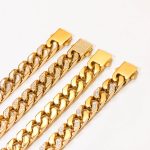
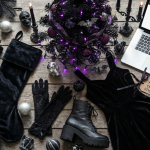

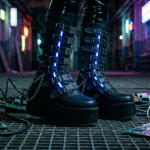

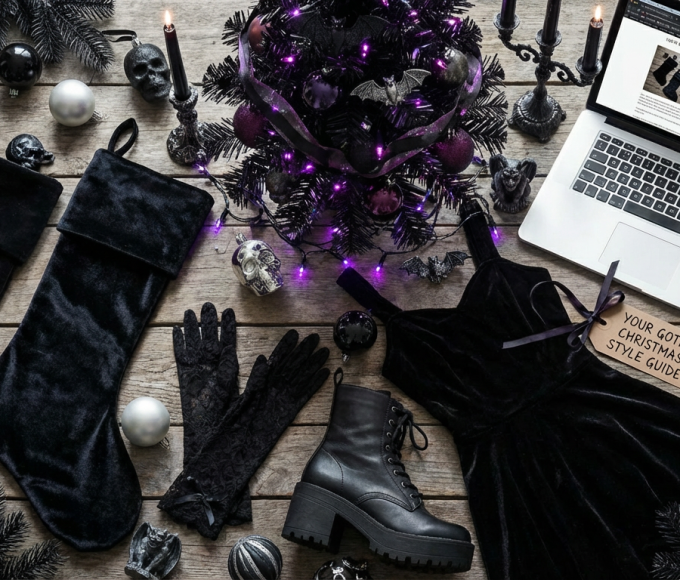

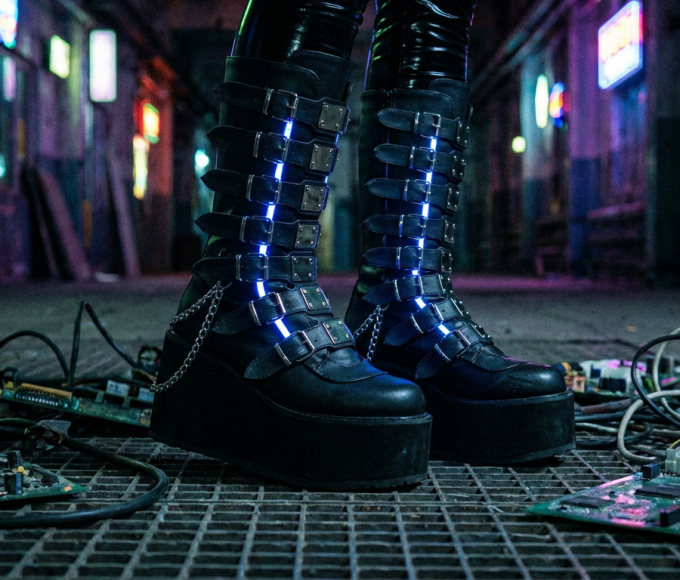

It’s great that you talked about how each piercing could be a small piece of personal art, which could be a way to communicate your identity visually. Body piercings are pretty cool and it seems one of my friends wants to get one. I don’t think DIY is going to be safe, so he should ask for professional body piercing services.
Thank you for your thoughtful response! It’s fantastic that your friend is considering getting one. Your concern for his safety is spot on. I would strongly recommend seeking the services of a professional body piercer. DIY attempts can be risky, and professional piercers ensure not only the safety of the process but also provide valuable expertise in choosing the right type of piercing and aftercare. Your friend’s safety and satisfaction are top priorities.